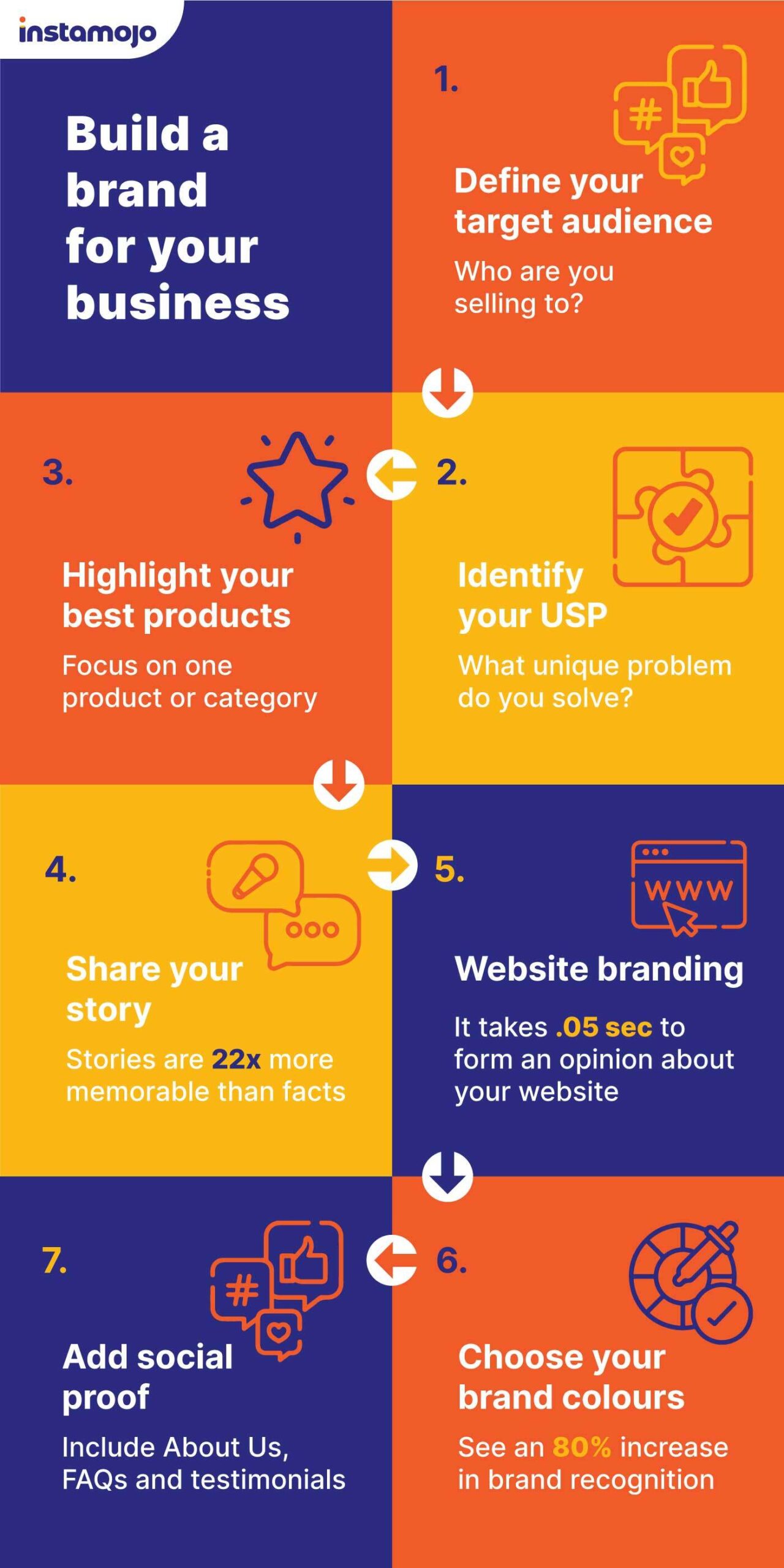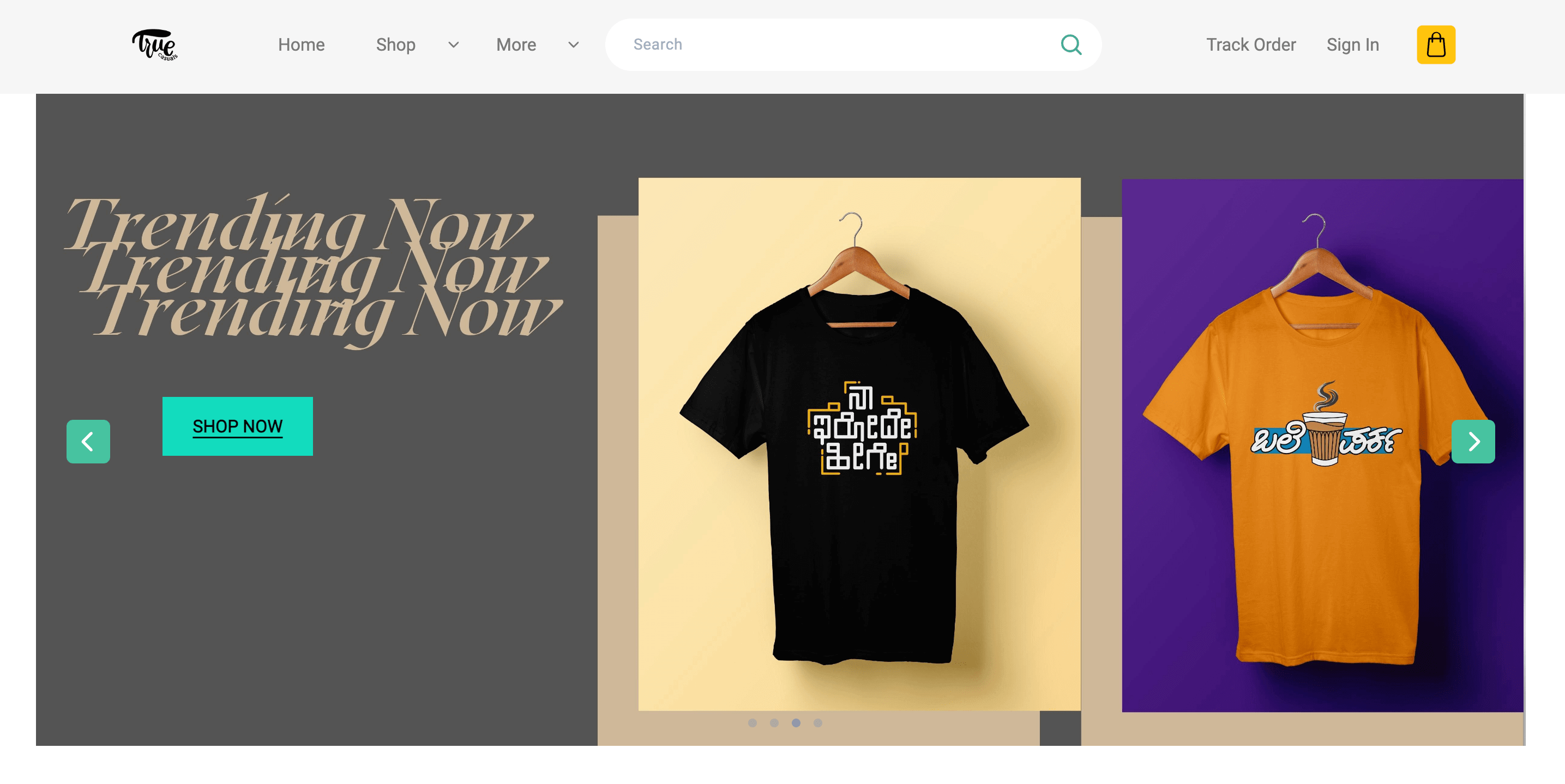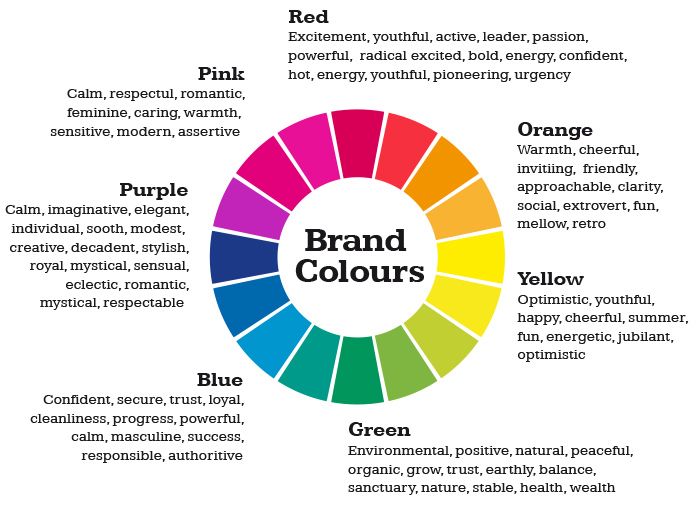“Products are made in the factory, but brands are created in the mind.” – Nalter Landor.
In a materialistic world, where so much is available to choose from, shoppers make choices based on brands rather than the products. According to a global survey, 55 per cent of shoppers prefer to shop directly with brands over retailers.
Of course, product quality is important. But customers are looking for something beyond products — the overall experience, brand values, story, and visuals.
As a small business, how can you build a brand and stand out from the eCommerce crowd? Read this blog to find out about branding for small businesses with examples and lessons from Indian DTC brands.
What is branding?
Branding is how you position your business before your target audience. The components of a brand include both visual and non-visual elements.

Imagine a business as a person. Just as a person needs time to build their identity and personality, so does a brand. It takes time and effort to put together a meaningful brand and showcase it to the world. You need to differentiate your business from competitors.
Here are the key components of a brand:
- Brand image
- Values
- Stories
- Emotions
- Logos and other visual elements
Why is branding important?
Why should you take the effort of building a brand for your small business when you can just start selling online?
Here are some key reasons:
Increased customer loyalty
A business with a strong brand presence online is more likely to retain customers.
44% of consumers say that they will likely become repeat buyers after a personalized shopping experience with a particular company.
Branding is one of the most important aspects of building customer loyalty, the others being excellent customer service and good product quality.
Better growth
77% of marketers say building a strong brand is key to their company’s growth.
Branding is directly related to your business’s sales — a strong brand identity makes you stand out from the competition and brings in sales in the long run.
Now that you know what branding is, let’s take a look at some brand-building myths many business owners have.
Let’s bust some common branding myths
Many business owners have certain preconceptions about brand building which prevent them from taking the first step. Let’s bust some of the most common branding myths.
Myth #1. Branding is expensive
Small businesses have a limited budget, manpower, and resources as compared to bigger businesses. That’s a fact. But that doesn’t mean branding can’t happen.
Many assume branding to be a luxury but in fact, it can be done with simple steps which require little to no money.
Of course, some activities like hiring a designer for a logo can be expensive. But, there are other ways you can start building your brand for your small business. We’ll get into those later in this blog.
Myth #2. It’s all about colours and logos
The visual aspect of a brand is important. But it’s not everything.
A brand is what customers perceive of your business. It’s the emotions that are instilled in them. This requires more than colours and logos.
For example, think about the Souled Store as a brand. Of course, you’ll recall their fun logo at first. But what really stays is their messaging of being a quirky brand that sells merchandise products.
Related read: 5 smart tips for merchandise business owners from The Souled Store
Myth #3. Branding is complicated
Contrary to this belief, not doing branding will complicate things.
It’s much easier to make a decision in the future if you have a set of brand guidelines, no matter how “simple” you believe your business to be.
With a brand vision, you have a clear path to follow, your customers get the right message, and you know what’s more important. It’s much easier to make a decision in the future if you have a set of brand guidelines, no matter how “simple” you believe your business to be.
How to create a brand out of your small business: Actionable tips

Build a strong brand for your small business with these proven tips and examples. We’ll focus on cost-effective ways you can start building a brand which you can apply right now.
1. Define your target audience
First things first: you need to know who you’re selling to.
Remember, a good brand is built around its customers. So you want to have a clear idea of what their interests are in order to get started with branding. This will help you get a clear path for your brand-building process.
Here are some questions that will help you define your target audience:
How do you use this information as part of your branding?
Firstly, you can communicate based on this. Use language and phrases that your target audience uses and make the messaging consistent.
2. What problems do you solve?
Now that you know who your ideal buyer is, it’s time to showcase how your product solves their problem. Know your unique selling point.
Customers buy a product or service because it makes their life easier.
When you describe your product, be it on product description pages or ads, make sure you focus on this pain point. This way, you’re conveying the benefit of your product in the best possible way.
Related read: How to sell products online: Your complete guide (2022)
3. Focus on one product or category
What does your product range have to do with branding?
How many times have you walked into a store to buy a piece of clothing, been overwhelmed with the decision process, and left with nothing? We’re definitely guilty of this one!
It feels like there are so many options, but nothing seems to completely check all your boxes.
The more choices shoppers have to choose between, the less likely they are to actually choose one!
Check this out:

The major reason is to avoid decision fatigue. Customers want to easily decide what they want to buy. Many products and options might distract them and prevent them from converting.
Also, the best brands have one product or category as their highlight. For example, when you think of Nike, you think of sports shoes and nothing else. Souled Store is synonymous with merchandise t-shirts and BlissClub instantly makes you think of activewear.
4. Share your story
According to psychologists, stories are 22x more memorable than facts.
Every business owner has a story. And this story is important to more than just yourself. It will resonate with your customers, and cultivate a community that advocates for your brand.
Here’s how you can start creating a brand story:
- Write down your origin story: How did you start your business and what inspired you?
- Leverage emotion: The best way to make your brand memorable is to leverage emotions in your brand story — Customers may not remember every detail of your brand story, such as when you came up with the idea, or where your first shop was located. However, they’ll remember how they felt when they heard your story. So, tell your brand story in a way that sparks an emotional response.
- Be authentic: Shoppers can easily tell if you’re faking a brand story. So make sure you keep it real. Avoid anything that sounds too cliche.
- A good storytelling medium: It’s also important to distribute your brand story properly once you’ve created it. It can be done on: an online store, social media, product labels, emails, etc.
Related read: Ebook – The Power of Branding and Storytelling to Increase Sales
5. Website branding
A website is an important part of your online business. And it should reflect your brand.

How do you present your brand on your website?
Firstly, write your brand story on your About Us page.
Secondly, select a theme that goes with your brand identity. On an Instamojo online store, you can customise the colour of your themes and fonts. This will further make your website reflect your brand.
Check out these amazing Instamojo online stores with cool branding.
6. Choose your brand colours
Customers recall a brand based on its colours and logo.
Research has shown that using a signature colour can cause an 80% increase in a consumer’s recognition of your brand.
So if you want your customers to recognise your brand, use the colours that describe your brand beautifully. Here’s a chart to help you get started:

You need to choose your brand colours carefully.
Here’s a three-step formula to help you get started:
- Find 3 words to describe your brand personality: Think values, tone of voice, and look & feel, These become your keywords
- Search for potential colour combinations: Go to Adobe Colour, Type in your keywords (search 1 word at a time)
- Pick 3 colours: 1 dominant colour (dark), 1 secondary colour (light), 1 neutral colour
Pro tip: The right brand colours can make you stand out from the competition. Here’s how: Look at your competitors, research their brand colours, find a common colour theme, and pick a colour that is completely different.
7. Add social proof
Branding is not all about creative designs and stories. It’s also about the authenticity behind it. This is what converts into revenue in the long term.
55% of online shoppers consider customer reviews to be very helpful in their purchase decisions. Reviews on websites are the best way to add social proof.

Post-purchase service: An important branding experience
A brand does not aim for impulse shoppers. A brand is built when a community of loyal customers slowly and steadily increases. But loyalty is not easy to achieve. Once a customer hits the “buy” CTA, there are two logical ways it could go.
- They hate your product, they say Goodbye.
- They love your product, they say let me try again
But there’s a third option. Where they sort of like your product, but they don’t know if it’s worth trying again. This is where the entire customer experience comes into focus.
A buyer’s journey continues well after the purchase. And optimising this section of the buyer’s journey can help cement loyalty and appreciation from the customer.

Indian D2C brands with inspiring brand stories
Here are 3 Indian brands that grew from humble beginnings with a strong brand story.
Bliss Club
An emerging D2C brand, Bliss Club started a revolution to get women across the country to go out, work out and move around more comfortably and freely.
They acknowledge the different body types of women and present themselves as a brand that cares for every woman. BlissClub features women of diverse body shapes and sizes.
They use social media to spread their message and build a community of passionate women.
Bliss Club understood the core pain point of their target market: lack of proper fitness wear for all body types. They didn’t just create a product around this; they created a whole brand personality.
Key takeaway: Focus on your target audience and their pain point. Always keep your customers at the heart of your business.
The Better Home
The Better Home starts at the bottom to ensure that we have a better planet: safer, healthier homes. This brand looks to create a better world by encouraging the use of sustainable products.
They believe that people shouldn’t have to choose between what’s effective, what’s right for you, and what’s good for the planet.
Some of their sustainable initiatives include: animal-free testing, a subscription program that encourages re-using plastic bottles, a take-back initiative that helps responsible recycling. They are also on track to switch to packaging made from recycled materials.
Their brand lets people feel that they’re bringing good change to this world and gives a feeling of being a responsible human being.
They sell based on the human emotion of wanting to do what’s better. The Better Home gives people a choice to choose what’s better for the planet.
Key takeaway: Emotions are powerful. Leverage it to convey your brand message.
Ditch the Guilt
The name says everything about the brand: enjoy delicious chocolate guilt-free.
Ditch the Guilt is a superfood brand that sells hand-crafted chocolate using the finest organic Indian Cacao beans, real cocoa butter and sugar-free, rich with nutrients.
The brand story emphasises on farm-to-brand.
To conclude
It’s time to strengthen your small business brand identity and build a place for your business in the eCommerce world.
You will need a website where you showcase your brand. With Instamojo, you can get your own eCommerce website for free. Get started today!

